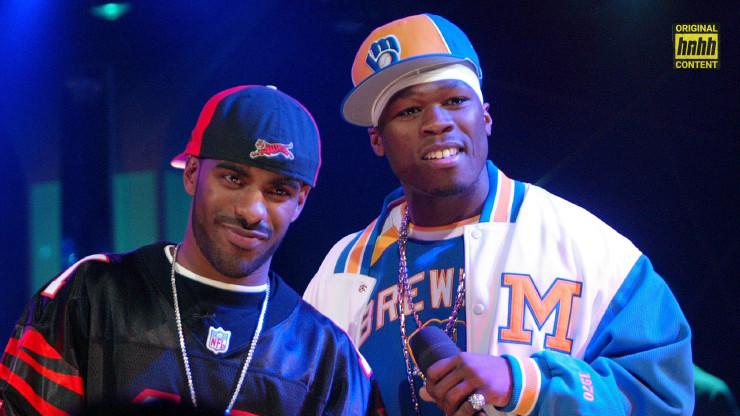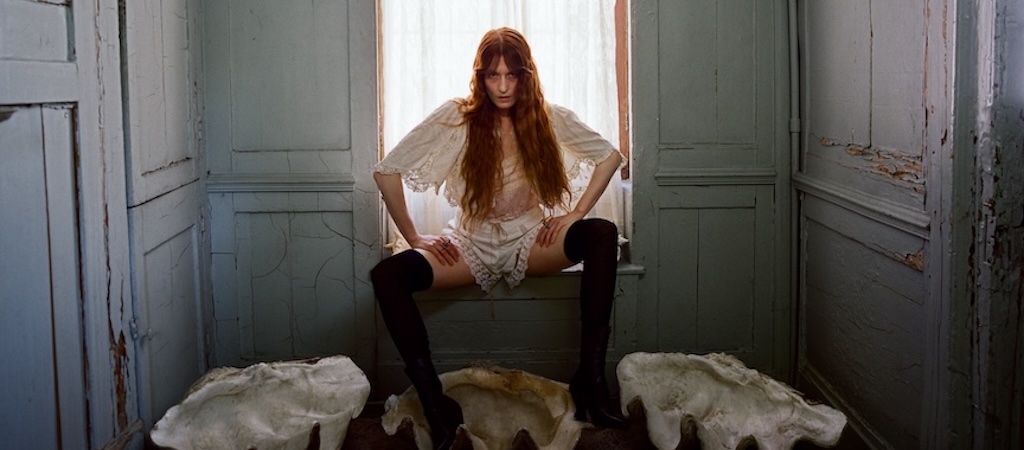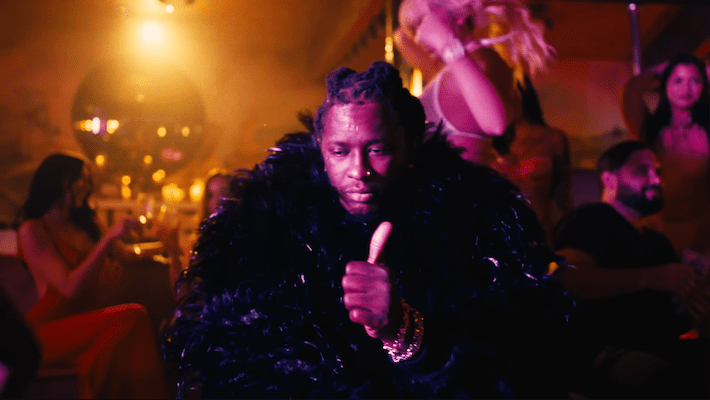From DJ Clue’s casette tapes to major label involvement, we trace the history of the iconic hip-hop mixtape.
Over their lifespan, mixtapes have changed in body, but never in soul. Whether the vehicle is zip files, MP3s or C60 cassettes – they’ve always been an integral part of hip-hop’s maturation. Many fans like myself have benefited greatly from the projects that introduced new artists and DJs to the listening community – even though they were candidly, loosely ethical, bootlegged copies of intellectual property that created questions about fair use and legality – they also grew to mega popularity and demanded substantial financial returns. Overall, mixtapes have and continue to have a convoluted but important legacy.
Growing up, I was never really able to afford albums, so mixtapes were my window into hip-hop. If you’re old enough, you’ll remember having a “burner” in high school. No, not a prepaid cell phone – a person who was known for selling mixed CDs blessed with the game’s newest and most exclusive music. Luckily, one of my best friends and teammates was the aforementioned “burner.” So, after practice, we’d swing by his house and he’d go into the secret lab (which was really just the computer desk in his parent’s den) and voila, like magic a shimmering CD would float down from the heavens into his hand before tossing it in mine. This alchemistic wizardry unlocked a treasure chest of tunes that fueled my love for rap music. We’d sometimes just ride around for hours in his car after school listening to our favorite tracks and debating about the newest artists.
One thing I loved about the tapes was their pageantry. You remember where you were when you heard classics like Lil Wayne’s Dedication or ’s Carter Collection. I’ll never forget where I was when I heard the Clipse now-infamous mixtape We Got It For Cheap Vol. 2. The project was drenched in voiced interludes and obnoxious DJ tags but most importantly vicious and imaginative bars. With the help of producer Clinton Sparks, Malice, Pusha-T, Sandman, and Ad-Liva redefined what the word mixtape meant. Rhyming over other rappers’ instrumentals in an uncanny fashion. As if they had something to prove and they deserved that industry acclaim and cultish fanfare. Back then tapes were a flare gun shot by up and coming artists trying to paint their name on the day’s rap mural. Take these lines by Malice for example:
We Got It For Cheap Vol 2 – Intro [Malice]
“And it’s a known fact y’all tired of the circus,
So come home where you smell the crack in the verses!
The whole rap world watched the Clipse take a bow,
We left it in ya hands, you ain’t make Father proud!
None of y’all can copy; a hard act to follow,
We was cursed with the spirit of verses, the stigmata!
Suicide bomb ya, like Mohamed Atta,
Or the doors on that Phantom, Re-Up, we rap martyrs what?”
Nowadays, it’s fairly normal to see artists routinely flood the hip-hop streets with an abundance of content. Every other week it seems rappers are delivering new music to fans – a far cry from earlier eras, times when listeners waited sometimes years to hear anything new from their favorite emcee. Twenty-plus track playlists, as is the en vogue terminology, and “commercial” mixtapes appear on platforms like Apple Music and Spotify with great regularity but in days past this sort of saturation did not exist. The explosion of the internet and advancements in technology has rendered music-making more accessible to hopeful DJs, producers, and rappers alike. Prior to this, getting your hands on a mixtape was a very limited and tangible experience. Sort of producing a snobbish hip-hop subculture. You’d have to find the block where the tape was being sold, sometimes out of a trunk or the corner store and get your hands on one before they were all gone. The web and early mixtapes sites allowed artists to reach more listeners quickly.
But, how did we get here? What are the origins of this modern-day practicality? And how can we explain the ebb and flow of their use and popularity from the infancy of hip-hop until now? Mixtapes have long been a grey area for both record labels and artists who bend copyright laws to facilitate the distribution of the mostly promotional projects. Mixtapes were some of the first building blocks for hip-hop – appearing as early as the mid-1970s in New York City. The groundbreaking compilations featured artists such as Kool Herc and Afrika Bambaataa. Classic records like “Planet Rock” emerged from mixtapes. They were incredibly effective in the early days and fans would collect and trade these tapes which helped spread hip-hop.
From the 1980s into the 1990s, DJs began to join in on the mixtape craze and became a driving force in their revolution. Music personalities like Kid Capri and DJ Clue took tapes from sets on cassette, to an exclusive consumer experience featuring hard-to-find tracks and verses– he infamously had Biggie’s “Juicy” on one of his mixtape cassettes prior to the release of B.I.G.’s Ready to Die album, resulting in a furious call from Biggie on-air at Hot 97. DJ Clue is no doubt a pioneer in procuring the medium as its own art form. Clue helped build the prototype for tapes which became iconic.

DJ Clue, and Jay-Z circa 2001 at the Soul Train Awards – Jeffrey Mayer/WireImage/Getty Images
Once homemade and sold door to door, in barbershop, and flea markets – the tapes grew into a multi-million dollar industry. RIAA reportedly estimated that in the early 2000s mixtapes were generating as much as $150 million dollars in sales each year. During this growth the music industry, for most part, turned a blind eye to the enterprise. I assume they equated the lost royalties to be invariable to gained promotion from the circulation of these tapes. Mixtapes famously incubated the early rap careers of artists like , T.I. and Jeezy. Like them, many rappers built the groundwork for their careers with mixtapes. Gaining the attention of major labels through the buzz those compositions created at a grassroot level.
Perhaps no artist in hip-hop history has executed and leveraged mixtapes to his benefit quite like 50 Cent. To rap purists, his name is synonymous with the word. Curtis took the game one step further, by not just spitting 16 bars on someone else’s instrumental, but making the songs his own. 50’s mixtape tracks were so popular they’d often get played in nightclubs and had mass appeal across the country. 50 rode the momentum he built through his mixtapes to one of the best selling debut studio albums of all time.
Mixtapes grew to be a core marketing strategy for rappers of the new millennium. They essentially became the de facto demo tape for an artist. To do that, they took on many different forms. Battle campaigns waged against the industry (50 Cent), promotional teasers for upcoming albums, DJs combining exclusive verses tracked by high-profile rappers. Both artists and DJs found a lot of ways to leverage mixtapes effectively. Mixtapes also have and continue to be used for artists who want to exercise more creative freedom in their music. Giving them an avenue to express freely without the label’s influence.
In 2007, DJ Drama and DJ Cannon were arrested on federal racketeering and bootlegging charges from the alleged sale of mixtapes. With the endorsement of RIAA, authorities raided the pair’s Atlanta studio – seizing more than 80,000 CDs and thousands of dollars in producing equipment. Classically dubbed the “mixtape martyrs,” Drama and Cannon bit the bullet for the industry. Drama, of course, pioneered the insanely popular “Gansta Grillz” series. Cannon was influential in his own right with the Affiliate Music Group – also producing tracks for previously mentioned “Gansta Grillz” series. The pair were incredibly formidable in the early part of the decade. It was a comeuppance and turning point in the timeline of mixtape culture.

Don Cannon (L), DJ Drama, and DJ Sense, 2005 – Ray Tamarra/Getty Images
After the fall of the “mixtape martyrs,” in 2010, the mixtape industry looked to be on life support and in desperate need of defibrillation. There was a time when you needed mixtapes to find the newest music but blogs and websites partially replaced the importance of the tapes in that they exposed listeners to new content without the quest. Everything was now at your finger tips. In a way, fans didn’t critically need mixtapes like they once did. Also, there was no way to charge for mixtapes with sites and social media spreading them. DatPiff, LiveMixtapes and HNHH began streaming mixtapes for free and made them easily accessible. It became more difficult to find a physical copy of any mixtape release. Yet as they have so many times over the years – mixtapes adapted to survive producing a new era in consumption. The boom of streaming took mixtapes yet another step.
Mixtapes are now big business components and perhaps just as important as albums themselves. A culmination of the mixtape timeline would be cashing in on a Grammy Award because of his project Coloring Book. He actually grew to superstardom before ever releasing one album. Acid Rap, another mixtape of his, initially propelled him into the spotlight along with a series of features on a-list records. Referencing Coloring Book he famously said on his Kanye’s “Ultralight Beam”: “Let’s make it so free and the bars so hard that there ain’t one gosh darn part you can’t tweet.”and on the project he had an entire song dedicated to addressing the place of mixtapes in hip-hop, saying “Am I the only n*gga still care about mixtapes.”
There’s an overwhelming amount of content hitting the web. Some have expressed concerns about hip-hop being extremely oversaturated with an influx of music. But don’t expect things to change. Now, mixtapes are an essential part of mainstream rappers’ portfolios. No longer reserved for merely the up-and-coming. , Kendrick Lamar, , Drake, and others will hit fans with new music, ambush-style. The compositions have also now lost their ties to DJs, free of interludes and drops like the ones in We Got It For Cheap Vol. 2. What we have now is a fusion of demo tapes and mixtapes which are their own entities. But if you ask me, more music is always a good thing. The essence of mixtapes are to cut out the middleman and get the music to the fans – without all the red tape. Now you have Apple Music and Spotify featuring mixtapes on their platforms, further bolstering their value to an artist’s catalog and blurring the lines between them and albums. So much has changed but so much stays the same. Mixtapes have morphed but retain their status in hip-hop.
What’s your favorite mixtape, or mixtape memory? Sound off in the comments.


